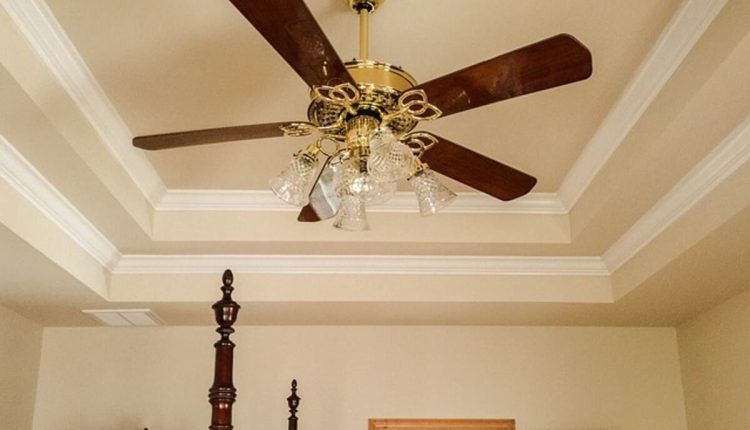How to Select and Mount a Ceiling Fan
Fans mounted in the ceiling provide comfort and reduce energy costs. In the summer, fans are commonly employed to generate a refreshing breeze, but in the winter, they can push warm air down from the ceiling. Many ceiling fans can be made more functional by installing light kits.
The fundamentals of putting in a ceiling fan are covered in this tutorial. However, before beginning any actual installation, be sure to check the manufacturer’s guidelines. The necessary wiring should already exist, as ceiling fans are typically installed in place of preexisting light fixtures. Putting in the buff is simple; all you have to do is follow the directions that come with it. You should hire one if you are not an experienced electrician and require more wiring to install your fan. Wiring must meet all national and local regulations.
Things to Think About
In both the warm and cold seasons, ceiling fans can significantly improve the comfort level of your home at a low cost.
A ceiling fan with a light kit can be a beautiful way to improve air circulation and the ambiance of any room by replacing the central lighting fixture.
A fan draws as much electricity as a ceiling light not to overwhelm the outlet. Ensure the circuit your fan is connected to can handle the extra load if it has lights. If not, a separate circuit breaker must be installed between the fan and the main service panel or a sub-panel in the basement.
If there isn’t already a preexisting ceiling light, you’ll need to install one before installing the fan. The next step is to connect it to an electrical grid. This can be done by clicking on a preexisting wiring system.
Before Setup
Find out how big a fan you’ll need. A 36-inch fan should be used if the length or width of the room where it will be installed is less than 12 feet. A 42-inch fan should be used in a space with a height or width of 12 to 15 feet. If the room’s longest side is more than 15 feet long, a 52-inch fan is required.
Turn off the electricity to the ceiling fan fixture before beginning installation. That would be ideal if you have access to a high-voltage neon tester. To prevent someone from turning the power back on while installing the fan, lock the breaker box. Obtain any licenses that could be needed. Be careful to leave some spare space for a fan.
Fans must be installed at 7 feet and no lower than 12 inches from the ceiling. Ideally, vents should be positioned 18″ from the top. The minimum clearance for a fan’s installation is 24 inches. A proper junction or outlet box must be installed and fastened to the building’s framing. Substitute a newer, approved container for installing ceiling fans or ceiling-suspended “paddle” fans. The weight of the rotating fan needs to be supported by the box and its base. The junction box manufacturer should be consulted for advice on the installation hardware to use. When the weight of the fan and its accessories adds up to more than 35 pounds, extra support beyond the outlet box is required. Find out from a specialist what the building regulations in your area are.
Procedures for Setup
First, attach the hanger pipe to the fan motor by inserting it into the opening at the top of the engine. Gently pull the wires forth from the hub. Make sure the fan’s set screws are snug.
Second, connect the blades to the motor housing. The typical fan blade has a two-pronged holder. Screw the edges to the flanges using the predrilled holes. Using a screwdriver, make sure they are snug.
Third, attach the hanger bracket to the wall by screwing in lock washers and the appropriate number of screws. Lock washers should come with the fan, but you may find them at any hardware store if they don’t. Having lock washers on the screws will keep them from coming undone from the fan’s vibrations.
Wiring the fan requires distinguishing between black (hot) and blue (hot) for the fan and white (standard) and green (ground) for the light kit, and white (average) for the light kit. All frayed or exposed wires should be encased with wire nuts. The black wires from the home should go to the black wires on the fan, and the white wires from the house should go to the white wires on the fan. Both bare copper and green are acceptable as grounding wire colors. The ground wires from the box should be wire-nutted to the ground wires from the power source and the fan. When you’re done wiring, carefully insert the wires into the junction box.
Fifth, power up the new fan and make sure it works.
Culletto, Mike
Expert in the Product
H-Mac Methods
Read also: Here Are Ten Top Tips If You’re Considering…


